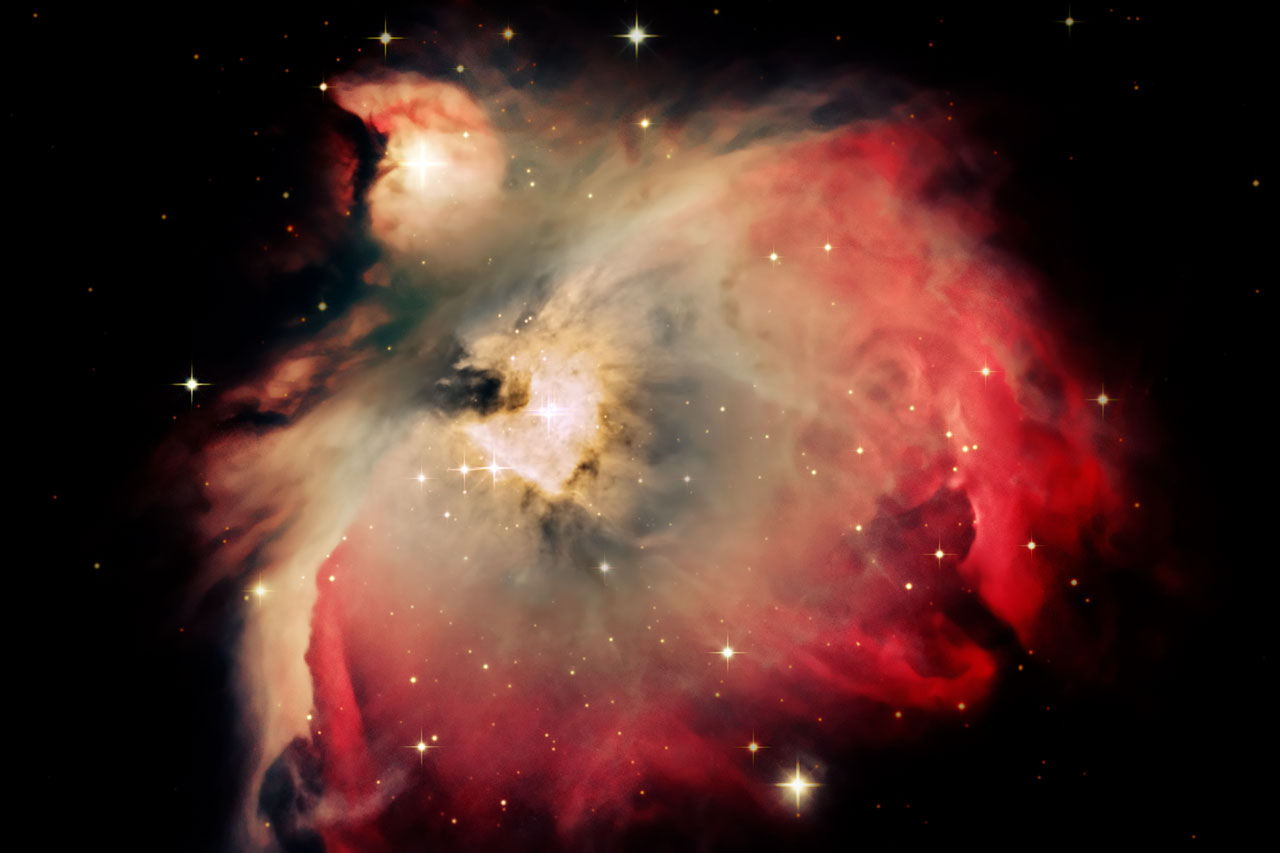 |
| Photo Credit: Jim de Lillo and the ESA/ESO/NASA FITS Liberator |
Friday, September 27, 2013
Orion Nebula
Sunday, August 11, 2013
The Pink Planet
 |
| Artist's conception of GJ 504b Image Credit: NASA's Goddard Space Flight Center/S. Wiessinger |
In recent years, though, it's become increasingly possible to detect certain kinds of planets from the direct observations of scientific telescopes, which can use filters to capture infrared radiation and turn it into visible images.
The planet GJ 504b, dubbed the "pink planet" was recently imaged in this way using infrared observations from the Subaru Telescope on Mauna Kea in Hawaii. Most of the planets observed so far by direct imaging have been large and relatively far away from the sun they orbit. The pink planet fits that description, but it currently holds the record for being the least massive planet observed in this way. Even so, it's a large planet like Jupiter. It's that similarity to Jupiter together with its distance from its sun that makes GJ 504b interesting to astronomers.
If planets like Jupiter form within the gas disc of a young star, as many astronomers have believed, then you'd expect to find such planets no farther away from their sun that the planet Neptune is from our sun -- a distance of 30 AU (astronomical units). Contrary to this prediction, GJ 504b is estimated to be 43.5 AU from its sun. That's difficult to explain with any of the current theories about how planets are formed.
What's easier to explain is why GJ 504b is pink. It's part of a relatively new solar system that was formed only ~160 million years ago, making it 30 times younger than our earth, so the planet is still cooling down. It's lost some of its heat, making it cooler than other planets that have been directly imaged, but it's still hot enough to have a magenta glow.
Saturday, July 13, 2013
The Blue Planet
 |
| Artist's conception of HD 189733b. Image Credit: NASA, ESA, M. Kornmesser |
One of the stars in this binary system, which is a mere 63 light-years or so from earth, has a planet designated as HD 189733b. This planet, which was discovered in 2005, is a gas giant that orbits close to it's sun. Planets of this type are sometimes called "hot Jupiters," and HD 189733b has been an object of study because it's the closest planet of this type that we know.
According to NASA & ESA, the sun-facing side of this planet is a furnace, with surface temperatures reaching nearly 2000°F and glass "rain" blowing sideways in up to 4,500-mph winds. It seems unlikely that life could exist under these conditions, yet this planet has provided information that's relevant to the question of whether life may exist on outside our solar system. HD 189733b was the first exoplanet on which water was detected (see NASA JLP article "Steaming Hot Planet" for details), and water is deemed essential for the survival of lifeforms as we know them. In addition to having significant amounts of water vapor, the atmosphere of HD 189733b has been found to contain oxygen, carbon dioxide and the organic compound methane (see NASA/ESA article "Hubble finds carbon dioxide on an extrasolar planet" . If these substances are common on planets outside our solar system, we may someday find them on planets similar to our earth in size and distance from their sun.
HD 189733b has recently been in the news because of it's color. What's special about the color of this planet is that we now know it. Planets are difficult to "see" in the usual sense, so scientists discovered the color in this case from careful measurements and logical inference. If you're interested in knowing more about how this was done, you can read the details in the new release "Hubble spots azure blue planet."
Subscribe to:
Comments (Atom)